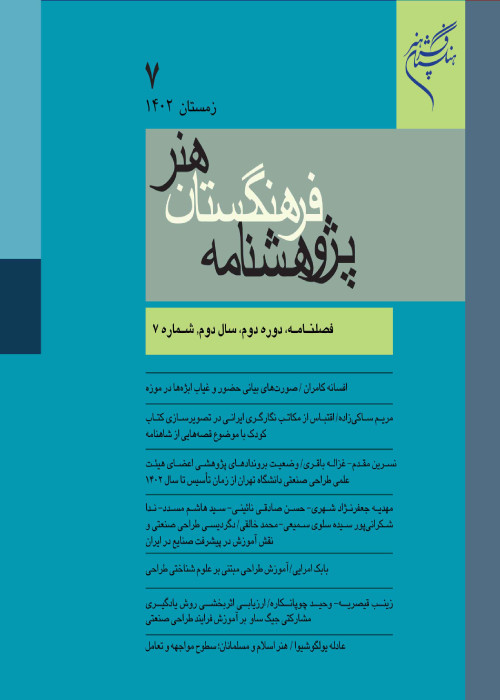The Contrast between “Culture” and “Nature” as Meaning-Making Systems in the Process of Cultural Translation: A Comparative Study of A Streetcar Named Desire and its Two Cinematic Adaptations by Kazan and Tavakkoli
The relationship between a written text and a cinematic script is based on their inter-</span>lingual translation. </span>Written signs change to visual ones and some changes occur along the way: changes which can be studied and researched from both aesthetics and interdisciplinary points of view. </span>The theories of Yuri Lotman and his fellows’ </span>in cultural semiotics of the Tartu- </span>Moscow School provide a basis for such interdisciplinary studies. </span>They believed that a part of meaning production is formed amid “</span>the contrast between nature and culture”. </span>The perspective assumes culture as the sign of calm and nature as the sign of chaos. </span>Based on this theory a dialectics is developed between meaning-</span>making systems in art criticism and cultural systems. </span>Paying attention to this, </span>the present paper tries to re-</span>read culture and nature in cultural semiotics and explore the potentials of this topic for studying cultural translation (</span>adaptation) </span>of cinematic works, </span>seeking its patterns. </span>This is followed by a reading from Tennessee Williams’</span>s play A Streetcar Named Desire based on Tartu-</span>Moscow cultural school in which the contrast between culture and nature is studied using a comparative approach, </span>in the plays two cinematic adaptations A Streetcar Named Desire by Elia Kazan (1951) </span>and The Stranger by Bahram Tavakkoli (2013). </span>Using library research and descriptive-</span>comparative method, </span>the research tries to cast light on translation mechanisms of “</span>culture” </span>and “</span>nature” </span>from the original text to its adaptations, </span>and how the semiological differences of “</span>culture” </span>and “</span>nature” </span>between the original and the adaptation help in meaning making.</span></span></div>
- حق عضویت دریافتی صرف حمایت از نشریات عضو و نگهداری، تکمیل و توسعه مگیران میشود.
- پرداخت حق اشتراک و دانلود مقالات اجازه بازنشر آن در سایر رسانههای چاپی و دیجیتال را به کاربر نمیدهد.


